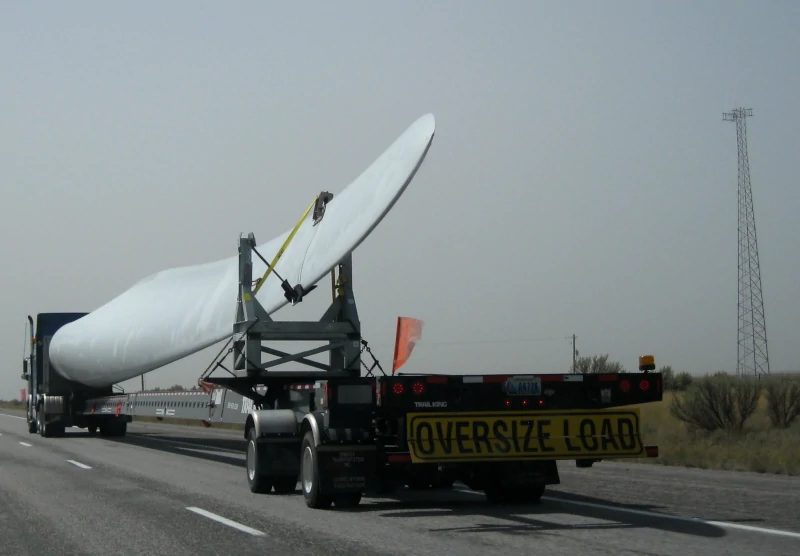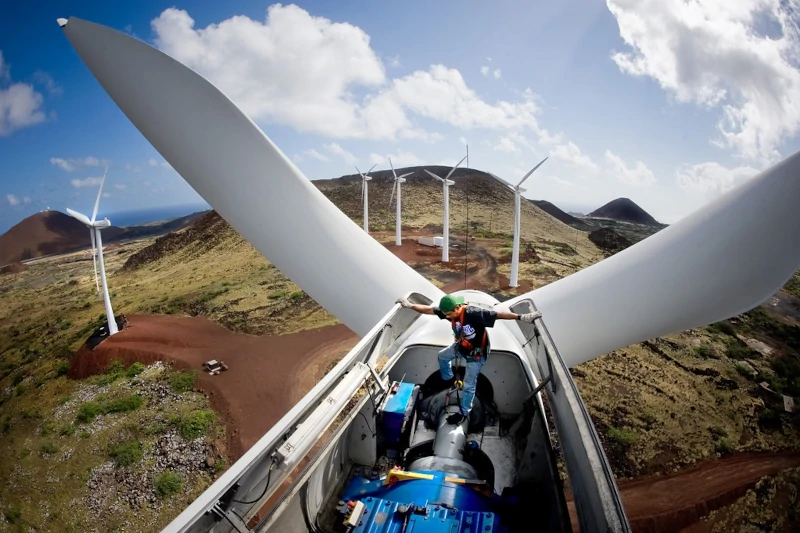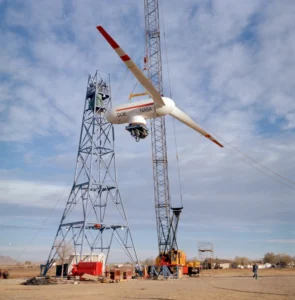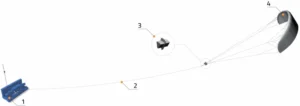How high is the Cost of a Wind Turbine?
In this article we look in detail at what is the cost of a wind turbine. There are small-scale home wind turbines and industrial, onshore and offshore wind turbines. Let us analyze the costs step by step.
Is Wind Energy Cheap?
In the 1980s, when the first commercial-scale wind turbines were installed, wind power cost up to 30 cents per kilowatt-hour. Today, wind power plants can generate power for less than 5 cents. That’s a competitive price even compared to new coal- or gas-fired power plants.
A new report by the International Renewable Energy Agency (IRENA) confirms that renewable energy is currently the cheapest form of power generation. With fossil fuel prices rising, investment in renewables in 2021 saved $55 billion in global power generation costs in the following year.
Wind technology has improved dramatically in recent years, leading to the creation of larger turbines with much greater efficiency. Increases in turbine hub height, rotor diameter, and rated capacity have thus allowed more energy to be produced per turbine than in the past.
How Much Does a Wind Turbine Cost Initially?
Let’s look in detail at all the costs of a wind turbine from design to commissioning.
The Breakdown of Initial Wind Turbine Costs
Industrial Wind Turbines
- Manufacturing
The lion’s share of the total expenditure in wind turbine production, approximately 70%, is allocated to manufacturing. This cost is primarily driven by factors such as the turbine’s size, the materials incorporated, and the place of manufacture. Each component of the wind turbine, including the blades and gearbox, is produced separately, possibly at disparate locations, due to the need for expert engineers specializing in each part. Despite its straight-forward construction, the tower component still accounts for a substantial segment of the overall costs. Labor and raw materials predominantly constitute the manufacturing expenses.
- Rotor & Blades
The blades of a wind turbine represent roughly 20% of the total turbine cost, with the price subject to variation depending on the chosen materials. These blades are typically fashioned from either glass fiber or a combination of both glass and carbon fiber. The glass fiber blades, although more cost-effective in terms of materials, are labor-intensive compared to the hybrid blades, rendering the cost difference between the two virtually insignificant. However, the blade size significantly influences the overall price. Considering that most wind turbines are equipped with three blades, the entire rotor’s cost can range from $500,000 for standard turbines to well over $1 million for larger models.
- Generator & Gearbox
The nacelle is a critical component of a wind turbine, encompassing the generator, gearbox, and speed brakes, in addition to transmission, axles, and driveshaft. It serves as the ‘power plant’ of the turbine, where electricity generation occurs. The expenses tied to the generator and its associated parts account for approximately 35% of the total cost of the turbine, and more than half of its manufacturing costs. The gearbox, a crucial and intricate piece of machinery within the turbine, demands precision engineering for its creation and reliability for its operation. Despite the relatively simplistic nature of wind turbines, the internal mechanics of the gearbox are complex. Designed to endure for around a quarter-century, gearboxes necessitate the most upkeep due to the multitude of moving elements. Factors such as varying temperatures and load shifts can lead to cracks and fractures in the gearbox. Throughout its lifespan, replacement of components might be necessary, and in certain instances, a complete gearbox failure could occur, contributing significantly to the wind turbine’s service and maintenance costs.
- Tower
The tower and yaw mechanism collectively comprise approximately 15% of a wind turbine’s total cost. The manufacturing costs for taller towers are higher due to the additional material and labor required. However, these towers yield a lower cost per kW by harnessing increased wind speeds at higher altitudes. The industry’s current aim is to reduce the expenses associated with increasing tower height, a goal closely tied to the development of innovative materials. Rolled tubular steel is, as of now, the most frequently used material.
However, new designs featuring taller concrete tower bases and lattice steel, alongside space frame designs, are being explored. Typically, a 1.5 MW turbine stands about 80 m tall, but some models can extend to heights of 140 to 160 m. A tower’s height doubles if its diameter doubles, quadrupling the material quantity required for the tower. The typical tower costs around $200 per kW, translating to around $300,000 for a 1.5 MW turbine, while towers for larger turbines can exceed $1 million.
- Transportation & Installation
Transportation forms a critical portion of the costs linked to wind power, accounting for approximately 3% to 8%. The costs amplify with the size of the turbine and when the site of installation is in remote areas due to the necessary construction of infrastructure like access roads. Various modes of transportation such as rail, ship, or truck could be used to transport wind turbines, often employing a combination of all three. The costs encompass fuel, labor, storage, port fares, and tariffs, and can greatly fluctuate based on factors like the country of origin, destination, transport mode, and the prevailing political environment.
It’s crucial to take into account the fact that various components of the turbine might be manufactured distinctively, thereby escalating transport costs as some parts might be produced farther away from the destination than others. A single wind turbine requires rigorous logistical planning for about a year and ten different loads for transportation.

Blades, especially for larger turbines, pose the most challenges during transportation. They are deemed oversized loads and necessitate careful handling during truck transport as careless drivers could accidentally drive under them if they’re protruding over the rear of a cargo truck, thereby elevating the risk of accidents. For short-haul transportation, the cost of transporting a single turbine ranges between $30,000 and $40,000, while long-haul transportation can exceed $100,000 per turbine.
Installation costs pertain to the assembly and construction of the turbine. Crane rentals can cost upwards of $80,000 per day, summing up to $100,000 to $150,000 per MW. However, the initial step is the construction of the foundation. The cost of the foundation is contingent on the tower’s height, the weight of the generator and rotor, and the soil conditions at the site. Turbine foundations may necessitate between 8 and 20 truckloads of concrete, which can amount up to $250,000 per turbine, inclusive of digging and engineering design. Access roads can cost up to $25,000 per quarter-mile, with the cost escalating with the remoteness of the location.
The location of a wind farm significantly influences its cost
For instance, while a wind turbine’s cost can reach about $1 million per MW in Europe or the United States, in countries like Brazil, turbines can cost as low as $500,000 per MW. Once the turbines are erected, they must be connected to the electrical grid. The infrastructure for electrical distribution comprises the transformer at the turbine base, underground wiring, power substations, and electric power poles. Transformers range between $15,000 and $50,000 per turbine, and the wires running down the interior of the turbine cost approximately $20,000. The costs may vary between $40,000 to $200,000 or more, contingent on the location and size of the wind farm.
- Operations & Maintenance
Once in operation, the maintenance costs of wind turbines are relatively minimal. Despite being a recurring expenditure, the income generated by the electricity it produces significantly outweighs the annual costs. The maintenance can be categorized into several components such as insurance, land lease payments, service and repairs, spare parts, administrative and legal expenses, and power consumption (as turbines require a small amount of energy to operate).
On average, operation and maintenance (O&M) equates to approximately 1 to 2 cents per kWh produced, translating to around $42,000 to $48,000 annually for the initial decade. Insurance generally costs between $8,000 and $15,000 per turbine each year. Administrative and legal fees, which include accounting and tax expenses, typically total around $6,000 to $10,000 annually.

Although maintenance expenses escalate as turbines age, it’s vital to note that these technologies are still in their nascent stages. The global average age of wind turbines is only six years. As engineers accrue more knowledge about wind turbine operations and longevity, they devise more effective maintenance strategies. Consequently, these costs are anticipated to decrease gradually in the near future.
However, as more turbines are installed and existing ones age, the overall O&M expenses will substantially rise. The maintenance costs for offshore wind turbines are higher due to the logistical challenges of worker transportation, the labor-intensive nature of the work, and the necessity for worker protection against maritime hazards and lightning. The larger size of offshore turbines also implies increased costs for spare parts and labor.
Residential Wind Turbines
- Roof Mounted Wind Turbines
If your rooftop is sufficiently elevated to harness the power of high-altitude winds, then roof-mounted wind turbines might be a viable consideration for you. These systems typically have a rating between 0.5 kW and 2.5 kW and cost around $3,000 on average, with the price fluctuating based on the nameplate capacity and quality.
It’s important to note that these roof-mounted setups are designed to complement your existing energy sources, not to be the sole provider of your home’s energy needs. The prospect of benefiting from net metering should not be expected. To put it into perspective, a 1.5 kW wind turbine can generate roughly 2,600 kW annually, covering about a quarter of your home’s energy requirements.
- Free-Standing Wind Turbines
Although free-standing turbines demand more investment upfront, they offer a considerably higher energy output. The size of such turbines can range from a modest 2-3 kW to an impressive 100 kW. A typical 10 kW system, for instance, may set you back anywhere from $50,000 to $80,000 but has the potential to generate roughly 10,000 kW annually – sufficient to power an average home. A larger 15 kW system could cost upwards of $100,000 but compensates with an output of approximately 36,000 kW each year.
At the upper end of the spectrum, we find the most sizable free-standing systems generating up to 100 kW – ideal for commercial usage. Such units can comfortably cater to the energy requirements of a school or a small building. However, their costs can vary widely, ranging from $500,000 to $1 million for 50 kW to 100 kW turbines.
Wind Turbine Maintenance Costs
Home wind turbines are engineered to withstand approximately two decades of operation, albeit with necessary upkeep. This includes regular cleaning and periodic replacement of parts. For smaller roof-mounted turbines, you can expect to spend a few hundred dollars annually on maintenance. Conversely, the upkeep of large, free-standing systems could run into several thousand dollars each year.
- What Does Operation & Maintenance Consist of?
Operation and Maintenance (O&M) encompass several aspects, which include insurance, land lease, servicing, repairs and spare parts, administrative tasks, and power, as wind turbines do require some electricity for functioning. These ongoing expenses are relatively minimal, and the energy output from the turbine significantly surpasses the cost of maintenance. However, repair work can notably reduce the turbine’s capacity (more on this later).
Lightning strikes pose a considerable risk to wind turbines. Although the blades are shipped from the factory with a built-in lightning protection system, they often prove insufficient. This issue is especially acute for offshore wind turbines, where the process of dispatching workers for repairs is both expensive and time-consuming. To mitigate such damage, additional lightning protection measures, such as segmented lightning diverters, are crucial. These products offer an extra layer of protection against potential damage caused by lightning strikes on wind turbines.
How Much Electricity Does a Wind Turbine Produce?
Onshore and offshore wind farms commonly feature large wind turbines capable of generating approximately 2 to 3 MW, with the most sizable offshore turbines capable of producing up to 12 MW of electricity.
Factors Affecting Electricity Production
- Electricity-Producing Capacity Is Impacted by the Size of Wind Turbines
Onshore wind turbine rotors have grown to a substantial size of 129 meters (423 feet). The standard sizes of commercial wind turbines in terms of their capacity, measured in megawatts (MW), are as follows:
- 1.5 MW (onshore)
- 2.5 MW (onshore)
- 4 MW (onshore)
- 6-8 MW (offshore)
Moreover, there are wind turbines with capacities climbing up to 15 MW, such as the GE Haliade-X which can generate 12 MW, and the Siemens Gamesa SG 14-222DD, a 15MW Turbine. Interestingly, these sizes are constantly increasing.
Offshore wind farms frequently opt for larger wind turbines primarily due to the expensive nature of their installation and the transportation of the electricity they produce. Another contributing factor is their enhanced efficiency resulting from steady, higher wind speeds. It is more advantageous to build one large turbine instead of multiple smaller ones, as it reduces the number of towers and ground anchoring systems required for construction, thus simplifying the entire process.
- Impact of Wind Speed and Direction on the Capacity Factor
A turbine, operating at optimal wind speed, can generate power up to its maximum rated capacity. For example, a turbine with a rating of 2.5 MW, will yield 2.5 MW power at peak wind flow. Nonetheless, it’s important to note that wind patterns are never steady. Variations in wind speed and direction inevitably lead to lower overall averages, typically within 30-40% for onshore turbines. In the case of offshore turbines, the capacity factor can rise up to 65%, and under exceptional conditions, it can even surpass this percentage.
Financial Aspects of Wind Turbines
- Quantifying the Financial Returns from Electricity Generated by Wind Turbines
Bear in mind that while a wind turbine can have a maximum designated capacity (e.g., 4 megawatts), it will only produce electricity based on a “capacity factor” or “load factor,” which is a certain percentage of this maximum. Below, the table illustrates some figures predicated on the standard sale price (2019 data) of electric power generated by wind turbines. This energy is re-sold to the utility companies’ electrical grid, with the price witnessing a downward trend as turbine technology advances.
| Turbine Size | Yearly Revenue | 35% Capacity | 50% Capacity | 65% Capacity | 100% Capacity |
|---|---|---|---|---|---|
| 1 Megawatt | $0.02 per kWh = $20/h x 24 hours x 365 days | $61,320 | $87,600 | $113,880 | $175,200 |
| 2.5 Megawatt | $0.02 per kWh = $50/h x 24 hours x 365 days | $153,300 | $219,000 | $284,700 | $438,000 |
| 4 Megawatt | $0.02 per kWh = $80/h x 24 hours x 365 days | $245,280 | $350,400 | $455,520 | $700,800 |
Through the sale of this electricity, wind turbines recover their costs and contribute to renewable energy production. We yearn for this power to become more affordable, and thankfully, it’s heading in the right direction. The objective is to have turbines produce at an increased capacity factor, indicating they’re generating more electricity for the duration of operation.
More Wind Turbine Questions & Answers
- How much does a wind turbine cost?
In general, the expenses associated with wind turbines hover around $1 million for each MW, resulting in a total cost ranging from $2 million to $4 million per individual turbine. The price tag for larger offshore wind turbines can escalate into the tens of millions. The most sizeable wind turbine constructed to date possesses a 12 MW capacity, and the expenditure for its production and installation amounts to a staggering $400 million.
- What Factors Contribute to the Cost of a Wind Turbine?
The expense of a wind turbine is often segmented into several key areas: manufacturing, transportation, installation, and upkeep. Among these, manufacturing usually incurs the highest percentage of the overall costs. Factors influencing the price of a wind turbine include the cost of raw materials, the country where it was produced, and the turbine’s dimensions.
- How much does a home wind turbine system cost?
Wind systems designed for residential use boast a capacity rating spanning from 0.5 kW to a hefty 100 kW. Investments in compact, roof-mounted systems typically hover around the $3,000 mark, while more substantial, free-standing installations can carry a price tag escalating up to $100,000. Regardless of the steep upfront cost, these robust systems are capable of generating a sufficient energy yield to comfortably power an expansive household.

